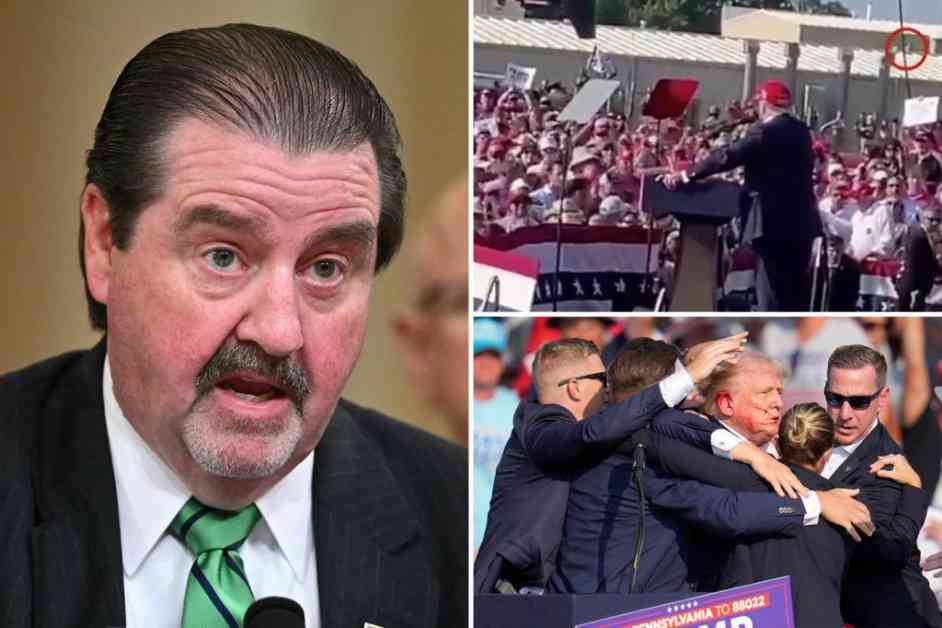A former Secret Service agent with over 20 years of experience recently revealed alarming weaknesses in security protocols during a campaign rally where former President Donald Trump was nearly assassinated. Patrick Sullivan, who served on two presidential details, testified before House lawmakers that the security measures in place at the July 13 rally in Butler, Pa., were “very atypical.” His testimony shed light on critical issues with the communications plan, agent placement, and overall security strategy that deviated from standard protocols.
Unusual Security Measures
Sullivan specifically pointed out the presence of two separate command posts for the Secret Service and local law enforcement, the lack of a single radio frequency for quick threat communication, and the failure to secure the perimeter of the Butler Farm Show grounds. These deviations from normal security procedures raised concerns about the effectiveness of the security detail in protecting the former president and attendees at the rally. Sullivan expressed his disbelief at the lack of a cohesive communications plan and emphasized the need for a unified command structure to ensure swift and coordinated responses to potential threats.
Communication Challenges
During his testimony, Sullivan highlighted the importance of having a single radio frequency monitored by the security detail responsible for protecting the president. He emphasized the need for immediate communication in the event of a security breach to facilitate the prompt removal of the protectee from any danger. Sullivan’s criticism of the fragmented communication plan at the rally underscored the potential risks posed by inadequate coordination among security personnel. The failure to address communication challenges could have serious consequences in ensuring the safety of high-profile individuals like former presidents.
Security Oversight
Sullivan’s testimony also contradicted earlier statements made by Secret Service Acting Director Ronald Rowe regarding the positioning of counter-snipers and the observation of crowd activities. He argued that counter-snipers should focus on external threats outside the perimeter, while crowd observation is typically handled by law enforcement officers within the event space. This difference in perspective highlights potential gaps in security protocols and the need for clearer guidelines on the roles and responsibilities of security personnel during public events. Sullivan’s expertise as a former Secret Service agent adds weight to his critiques of the security measures implemented at the Butler rally.
The testimony provided by Sullivan and other witnesses, such as Butler County Emergency Services Unit Commander Edward Lenz, raised questions about the overall effectiveness of the security detail at the campaign rally. Lenz’s revelation that the Secret Service did not request snipers to be deployed to the rooftop where the assailant fired shots further underscored the lapses in coordination and communication among law enforcement agencies. The lack of a comprehensive security plan and failure to anticipate potential threats compromised the safety of both the former president and rally attendees.
The aftermath of the assassination attempt on Donald Trump highlighted the need for enhanced security measures and improved coordination among law enforcement agencies tasked with protecting public figures. Sullivan’s recommendations for a unified command structure, streamlined communication protocols, and strategic deployment of resources could help prevent similar security breaches in the future. As a seasoned Secret Service veteran with firsthand experience in safeguarding high-profile individuals, Sullivan’s insights offer valuable perspectives on the challenges and complexities of ensuring public safety in a volatile political environment.
In response to Sullivan’s testimony and the findings of the House task force investigating the assassination attempt, there is a growing consensus on the need for comprehensive security reforms in handling public events involving prominent figures. The vulnerabilities exposed during the Butler rally underscore the importance of proactive risk assessment, effective communication strategies, and seamless coordination among security personnel to mitigate potential threats. The lessons learned from this incident should serve as a catalyst for strengthening security protocols and enhancing the readiness of law enforcement agencies to respond to evolving security challenges.
The revelations made by Sullivan and other witnesses regarding the security weaknesses at the campaign rally have prompted calls for greater accountability and transparency in assessing security protocols for future events. The critical examination of the lapses in security measures and the failure to prevent the assassination attempt on Donald Trump underscore the urgent need for proactive measures to enhance the safety of public figures and minimize security risks. The recommendations put forth by Sullivan and the House task force highlight the importance of continuous improvement in security practices to adapt to emerging threats and safeguard the well-being of individuals in the public eye.
As the investigation into the security breach at the Butler rally continues, there is a growing consensus on the need for comprehensive reforms in security protocols and risk mitigation strategies. The testimonies provided by Sullivan and other witnesses offer valuable insights into the challenges faced by law enforcement agencies in ensuring the safety of high-profile individuals during public events. The lessons learned from this incident should serve as a catalyst for strengthening security measures, enhancing communication protocols, and fostering greater collaboration among security agencies to address the evolving security landscape effectively.

